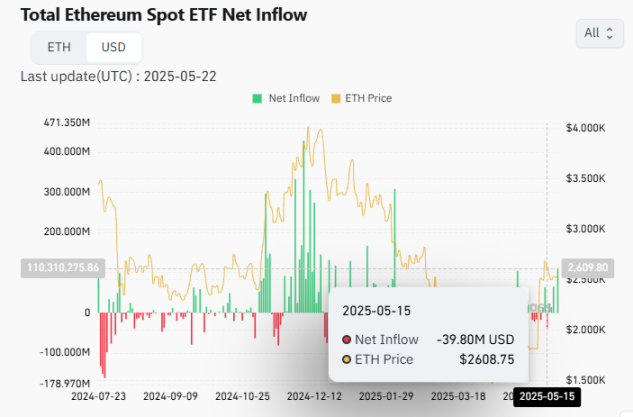Ethereum wants to be the "settlement layer of the future", aiming at RWA
Written by Yilong Bao, Wall Street has seen that
Ethereum is undergoing a public "self-reinvention" in hopes of cementing its position as the settlement layer of the future with a "trillion-dollar security plan" and betting on the tokenization of real-world assets.
On May 14, Ethereum announced a trillion-dollar security plan on its official blog, aiming to position Ethereum as the settlement layer of the future for individuals and institutions as a way to embrace the mainstream trend of real-world asset tokenization (RWA). At the heart of this move is the emphasis on Ethereum's decade-long stable uptime and decentralised set of validators as a testament to its ability to secure trillions of dollars in value.
According to Ethereum's official announcement, the "trillion-dollar security plan" consists of three parts:
-
Draw a picture of the security advantages and attack vectors in various domains and levels of the Ethereum technology stack. Input from across the ecosystem will be gathered and compiled into a security overview report that will help us identify key areas of focus.
-
Implement improvements in the focus areas identified in the mapping overview. We will work closely with the ecosystem to implement near-term high-priority remediation measures and allocate funds for long-term improvement projects.
-
Communicate Ethereum's security more effectively. Users of all types should be able to understand, utilise, and benefit from Ethereum's strong security foundation. Anyone should be able to evaluate Ethereum's security standards and compare them to other blockchains and legacy systems.
However, this ambitious vision also raises questions. According to Katie Talati, Arca's head of research,
this is more of a marketing ploy than a real technological innovation. This statement alone is not enough to recapture the attention of developers and users. Still, Ethereum's long-term development is worth watching, especially with improvements in user experience and user interface, which may attract more developers.
Some media pointed out that it is still unknown whether institutional investors will buy this. The U.S. spot Ethereum ETF is currently not widely recognised by institutions, with net outflows of nearly $40 million as of May 15, while 12 spot Bitcoin funds saw net inflows of $8 billion over the same period.

While ETFs and staking yields are expected to boost Ethereum's appeal, it remains to be seen whether institutional buyers will be impressed by the abstract security narrative. They may be more interested in yields, price increases, and the assurance of Ethereum's roadmap.
Ethereum's dilemma: Facing challenges from SolanaAccording
to media reports, despite Ethereum's technological advancements, its native token, Ether, has underperformed.
Since 2022, when the original Ethereum mainnet (ETH1) was combined with the Beacon Chain (ETH2), Ethereum has been underperforming Bitcoin. To make matters worse, Ethereum's appeal among developers and users is waning, while more attractive competitors like Solana are on the rise.
According to data from Electric Capital, the number of active developers on Solana will grow by 83% in 2024, while Ethereum will lose 17%. With lower fees, aggressive collaborations, and the boost of meme coins, Solana has attracted a younger, more experimental user base and has also won investor interest, driving its token price to record highs.
Ethereum's proponents are looking for a change. Etherealize, a new organisation backed by Ethereum co-founder Vitalik Buterin and led by Vivek Raman, aims to give Ethereum a voice in Washington and among institutional investors. Raman said that the
security of the blockchain is the most important quality to ensure trust, and Ethereum aims to become "digital oil", which complements Bitcoin's "digital gold" to form a balanced portfolio of digital assets.
According to the report, Ethereum is trying to position itself as a solid, secure, but "boring" infrastructure. In the long run, this may work. But in a market rife with a "degen culture" (high risk, high reward) chasing short-term profits, Ethereum's "trillion dollars" vision may be premature.
